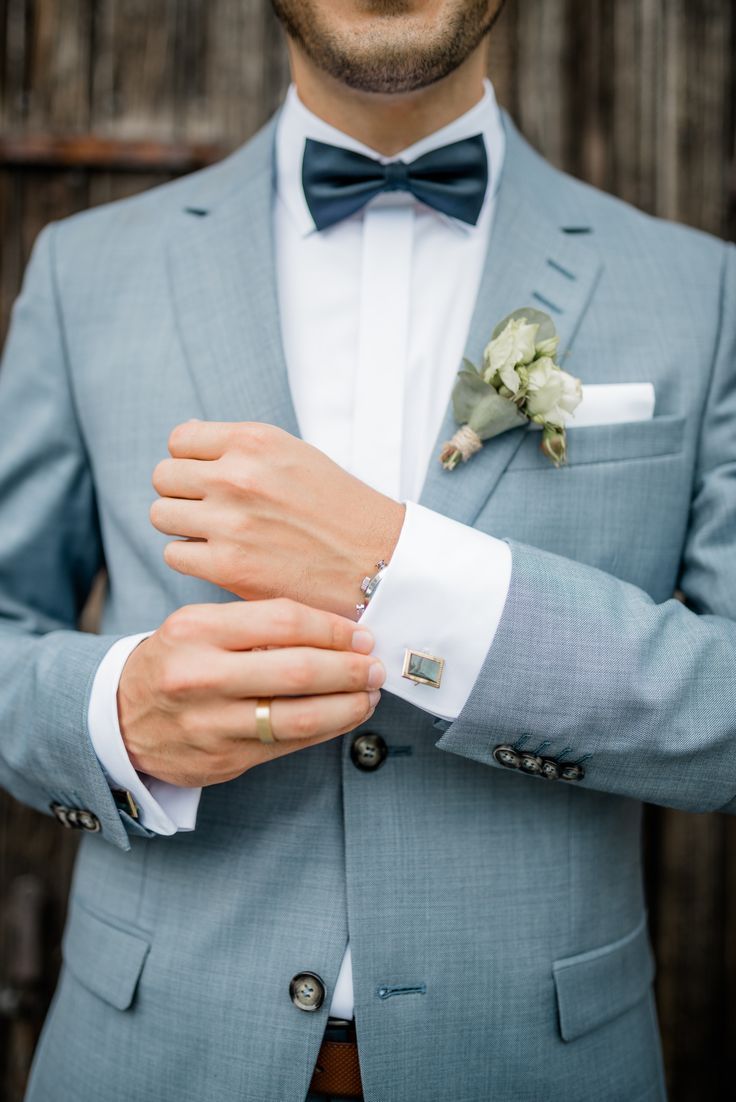Achieve the Perfect Fit: A Guide to Measuring Yourself
Overview
Learn how to measure yourself for the perfect suit fit, understand why fit matters, and discover tips for choosing styles that complement your body type. This guide covers essential measurements, shopping advice, and the importance of tailoring to enhance your appearance and confidence.
Frequently Asked Questions
1. Why is the fit of a suit important?
2. What tools do I need to measure myself for a suit?
3. How do I measure my chest for a suit?
4. What should I consider when choosing a suit style for my body type?
5. Why should I consider tailoring my suit?
Finding the perfect fit for men’s suits and formal mens clothing can be a daunting task. Whether you're dressing for a wedding, a corporate meeting, or a formal event, your suit needs to fit you flawlessly. Fortunately, measuring yourself isn’t as difficult as it may seem. This comprehensive guide will walk you through each step of the measuring process, ensuring that you look sharp and stylish without overspending on cheap suits. Let’s dive in!
Understanding the Importance of Fit
The fit of a suit can make or break your appearance. A well-fitted suit showcases your physique and boosts your confidence while poorly fitted suits can make you look unkempt. It is essential to choose the right size and style when shopping at your favorite suit store. Here are some reasons why a perfect fit matters:
- Enhances Appearance: A tailored fit compliments your body shape and boosts your overall look.
- Improves Comfort: Well-fitted suits are more comfortable, allowing for free movement without restriction.
- Boosts Confidence: Wearing the best suits that fit just right can elevate your self-esteem.
What You’ll Need
Before you begin measuring, gather the following tools:
- A flexible measuring tape.
- A notepad and pen to record your measurements.
- A mirror to help check your posture while measuring.
- Wear fitted clothing or measure yourself over your underwear for the most accurate results.
How to Measure Yourself for the Perfect Fit
1. Chest Measurement
Your chest measurement is crucial when selecting men’s suits. To measure your chest:
- Wrap the measuring tape around the widest part of your chest, just under your armpits.
- Ensure the tape is flat and snug but not too tight.
- Take a deep breath while measuring to get a realistic size.
- Record the measurement.
2. Waist Measurement
The waist size determines the fit of your trousers. Here’s how to measure it accurately:
- Locate your natural waistline, usually just above the belly button.
- Wrap the measuring tape around your waist, ensuring it’s horizontal and snug.
- Remember to relax your stomach while measuring.
- Jot down the measurement for reference.
3. Hip Measurement
For styles that require a suit with trousers, your hip measurement is essential:
- Stand with your feet together and measure around the fullest part of your hips.
- Make sure the measuring tape runs parallel to the floor.
- Record this measurement for your suit size.
4. Sleeve Length
A well-fitted sleeve length is key for comfort and style. To measure your sleeve length:
- With your arm relaxed at your side, measure from the back of your neck, over your shoulder, to your wrist.
- Make sure the measuring tape follows the natural curve of your arm.
- Write down the length measurement.
5. Inseam Measurement
Your inseam is a critical measurement for trousers. Here's how to measure it:
- Stand straight with your legs slightly apart.
- Measure from the top of your inner thigh to the bottom of your ankle.
- Use this measurement to find the right fit for your trousers.
Putting It All Together
Now that you have all the essential measurements, it’s time to determine your suit size. Most suit stores will have size charts available. Here’s how to utilize your measurements:
- Cross-reference your chest, waist, and hip measurements to find your suit size.
- Look at your sleeve length to choose the correct jacket length.
- Check the inseam to ensure your trousers will fit comfortably.
Choosing the Right Style for Your Body Type
Understanding your body type can help you choose the best suits that fit your frame well. Here are some tips for different body types:
1. Athletic Build
If you have an athletic build, you may have broader shoulders and a smaller waist. Look for suits that taper at the waist, ensuring a tailored fit without feeling constricted.
2. Slim Build
For a slimmer body type, opt for suits that provide a fitted appearance, such as slim-fit suits. This style will help define your shape without overwhelming your frame.
3. Average Build
If your body type is average, standard or tailored suits work best. These cuts provide comfort and style while allowing enough room for movement.
4. Larger Build
For those with a larger build, look for suits designed with extra room in the chest and waist. Avoid overly tight-fitting suits that could restrict movement.
Shopping for the Perfect Suit
With your measurements and body type in mind, it’s time to shop! Here are some tips for ensuring you get the perfect suit:
- Visit reputable suit stores that offer a range of styles and sizes.
- Don’t shy away from trying on different cuts and brands to see what fits best.
- Ask for advice from store associates—they have experience and can guide you in finding formal mens clothing that suits your needs.
Tailoring: The Key to a Perfect Fit
Even after measuring yourself accurately, there are instances where the suit may not fit perfectly off the rack. That’s where tailoring comes into play. Here are the benefits of getting your suit tailored:
- Custom Fit: A tailor can adjust the suit to fit your body shape perfectly.
- Personal Touch: Tailoring adds a personal touch, making the suit uniquely yours.
- Long-lasting Impression: A well-fitted suit leaves a lasting impression, enhancing your professional image or event outfit.
Embracing Your Unique Style
While fit is critical, don’t forget about your unique style! The best suits reflect your personal taste and can be accessorized to enhance your look further. Here are some elements to consider:
- Fabric Choice: Choose a fabric that suits the occasion—lighter materials for summer events and heavier fabrics for winter.
- Color: Opt for classic colors like navy, black, or gray for versatility, or experiment with bolder shades for a statement piece.
- Accessories: Complement your suit with ties, pocket squares, and shoes that reflect your individual style.
The Journey to Suit Perfection
Measuring yourself for the perfect fit is more than just numbers—it’s about crafting an image that makes you feel confident and put-together. By following the steps outlined in this guide and considering your unique measurements, you will be well on your way to finding the ideal suit.
As you embark on your journey to suit perfection, remember that an ideal fit can elevate your style for any occasion. Take the time to invest in well-fitted suits, and don’t hesitate to seek advice from professionals. You’re not just making a purchase; you’re making an investment in your appearance and self-esteem. Now go out there and find the suit that makes you shine!








